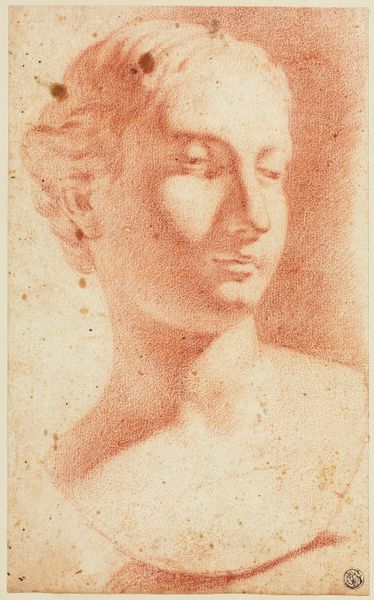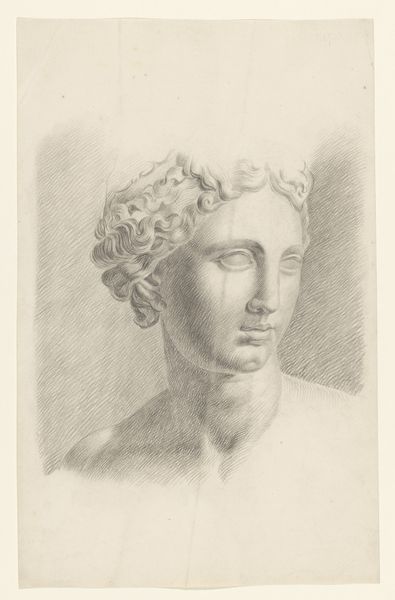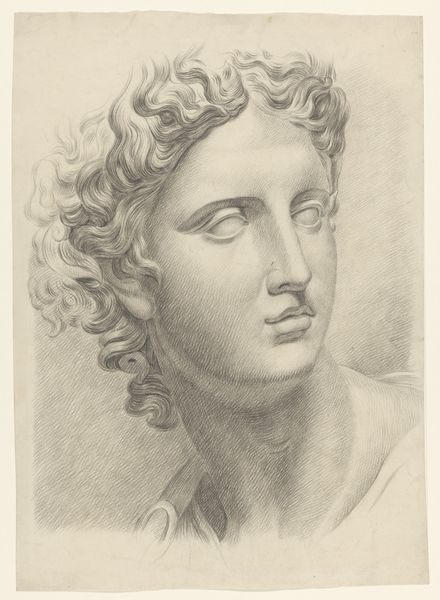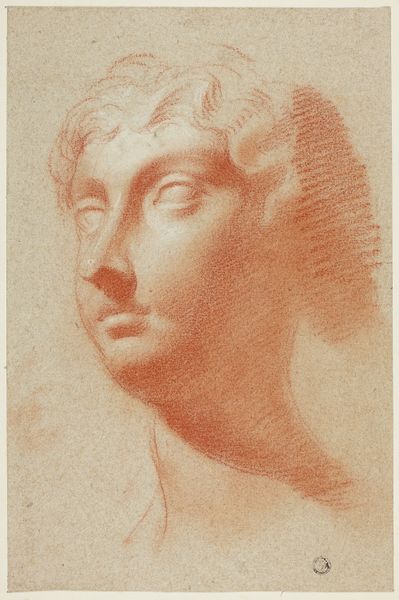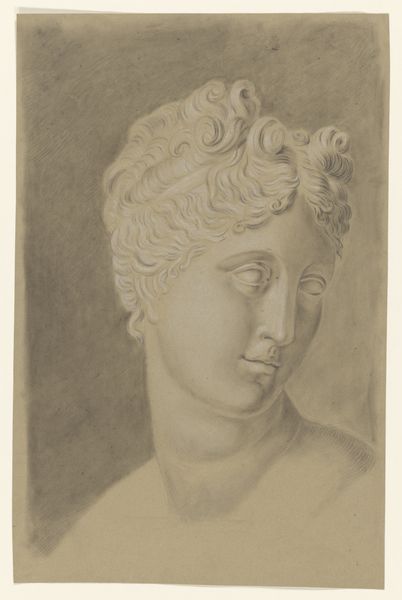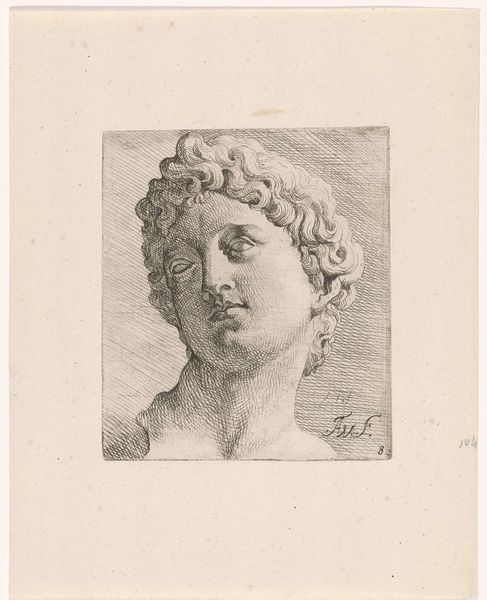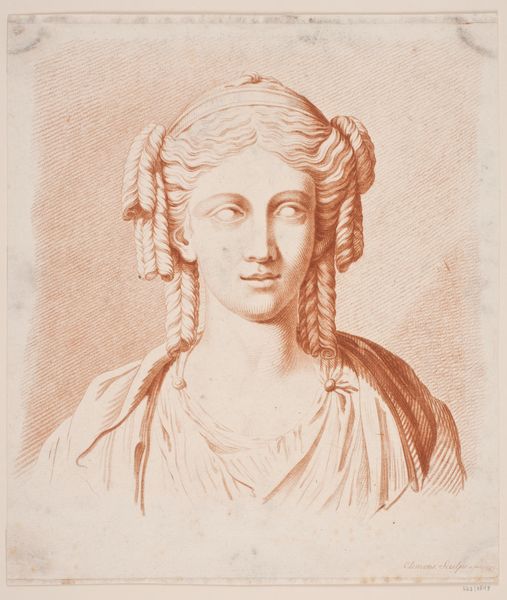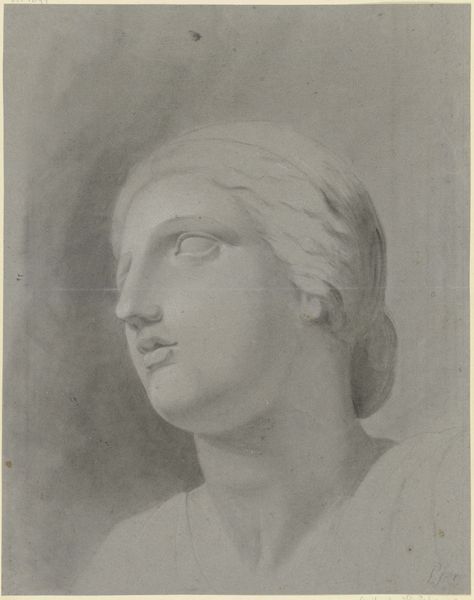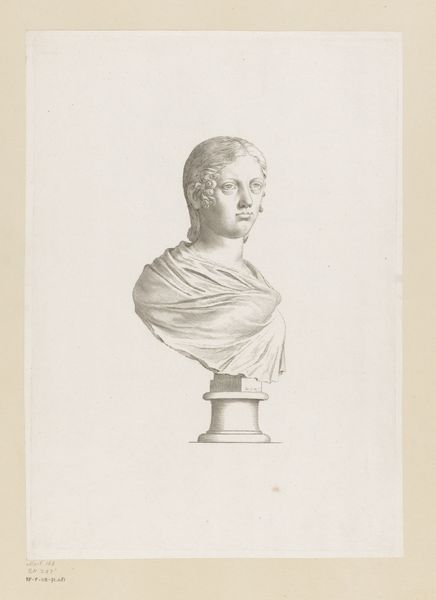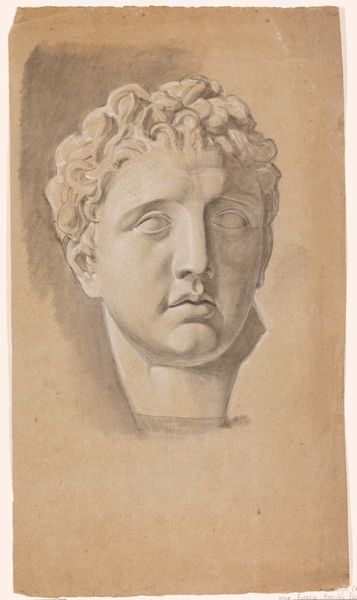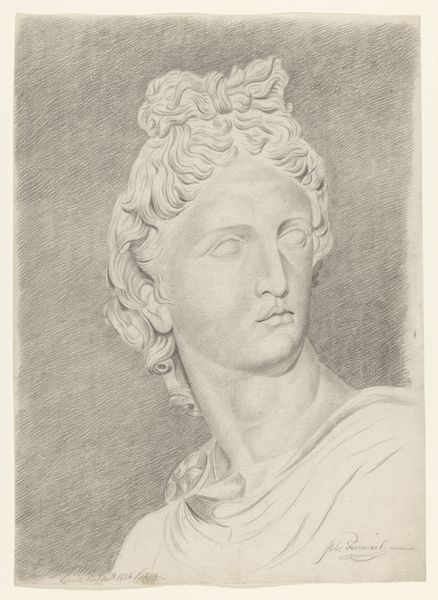
drawing, red-chalk, pencil
#
portrait
#
drawing
#
neoclacissism
#
red-chalk
#
greek-and-roman-art
#
pencil
#
portrait drawing
#
academic-art
#
portrait art
Dimensions: 15 x 10 5/8 in. (38.1 x 26.99 cm)
Copyright: Public Domain
Curator: Immediately, I’m drawn to the drawing’s starkness. It is dominated by a muted red chalk, evoking an earthy tone. It lends an atmosphere of classic restraint. Editor: This drawing, titled “Head of Empress Sabina,” dates to around 1776. Preserved in the Minneapolis Institute of Art, it provides an intriguing study in portraiture of powerful female historical figures. How do you interpret its historical context? Curator: As an interpretation of Sabina, wife of Emperor Hadrian, this artwork participates in an enduring visual legacy shaped by classical ideals. However, one cannot disregard the contemporary gaze shaping this depiction, especially given Neoclassicism's propensity to sanitize history through idealized aesthetics and its implications for understanding gender and power during the era this portrait was produced. Editor: You're right, the composition demonstrates considerable formal dexterity. See how the delicate red-chalk strokes sculpt volume and highlight contours. The rendering creates soft gradations, but does it capture Sabina? I feel like I am experiencing an intellectual representation, but at arm’s length. Curator: Agreed. This work is less about capturing individual personality and more about evoking ideals tied to antiquity. What does it mean to represent power through the lens of femininity? This ties into gender constructs and roles associated with empresses in that era, which also reflects the ideals held by those who commissioned and produced the artwork. Editor: Very insightful, you're right to bring us to broader discussions around representation. Its very form becomes part of a coded language; not just for art historians, but for those interested in reading through the layers of power imbued in artworks from any period. Curator: Precisely! By focusing on this work, one considers how gendered legacies have been perpetuated through art history itself and continue impacting social norms surrounding identity today. This has changed my impression considerably. Editor: I concur. Viewing it as more than mere aesthetics shifts how we experience the art object and enables insightful discussions.
Comments
No comments
Be the first to comment and join the conversation on the ultimate creative platform.
